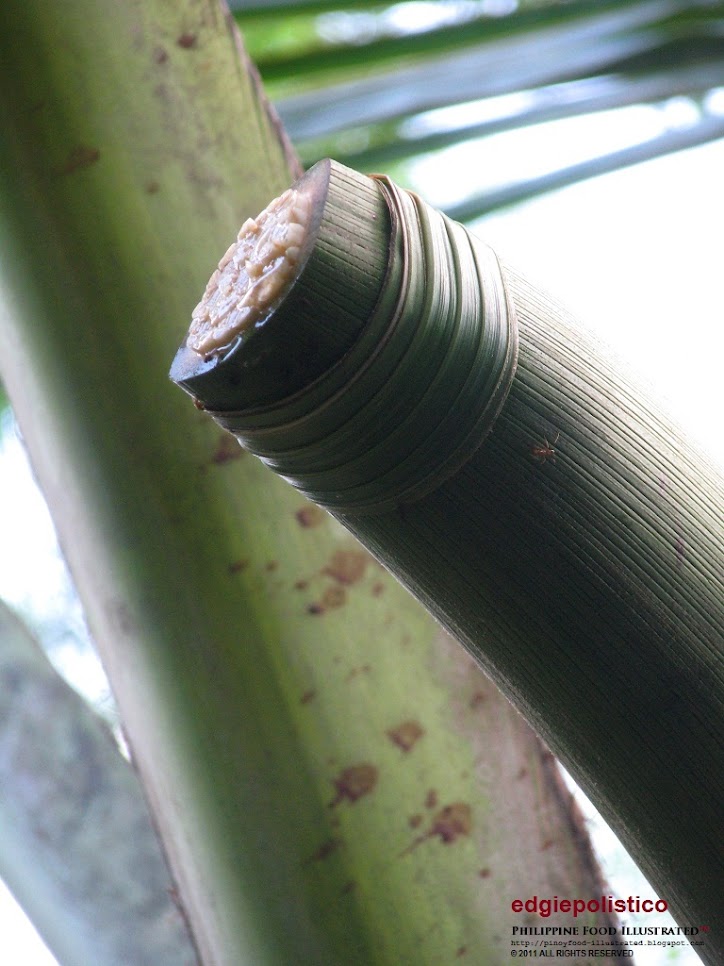 |
A bundle of tungog, the kind of tanbark used by manangguete to flavor their tuba in Leyte, Bohol, Cebu and other places in Visayas and Mindanao.
tungog - /tu-ngòg/ Cebuano and Boholano fermentation agent/tanning agent [n.] tanbark \mangrove tanbark (Bot.name: Ceriops tagal (Perr.) C.B.Rob.).
Other local common names:
- barok in Tagalog and Waray
Tungog would cause the natural fermentation of alcohol and prevents the souring of tuba when producing bahal (old tuba) and bahalina (aged tuba). The flavor makes aged tuba compete in taste with any of the western red wines.

Tungog is pounded into bits or even smaller than what is shown in the picture when used as fermentation agent of tuba.
In Visayas and Mindanao, tungog has the following descriptive names:
- binukbok - tungog that is pounded into coarse bits and pieces.
- pinulpog - tungog that is pounded further into finer bits or pulverized.
- inigot - when tungog is sliced so thinly using razor sharp blade, like sundang, sanggalab, kutsilyo, etc. and the slices are broken into fine bits and pieces.
Most Asian countries also used this mangrove tanbark in the industrial process of tanning hides of animals to make leather. The bark would also be served as a dye in tanning leather products, giving the leather a brown-orange to light brown color.
All photos by Edgie Polistico in this blog are copyrighted. ALL RIGHTS RESERVED.
If you liked this post or the blog site, share it.
Let us know your opinion on the subject. Feel free to comment in the comment section, below. It is important for us to know what you think.
Tell us what other topics you would like us to write, share, and discuss about.
For more about Filipino food, see this Philippine Food, Cooking, and Dining Dictionary. It is OPEN and FREE.
Continue to follow my blogs. You can also follow and learn more by joining us in our Facebook group. Have more bits and pieces about our kind of food, ingredients, and ways of cooking, dining, and knowing food culture across the 7,641 islands of the Philippines.
Encouragement and enthusiasm are not enough. I also need moral support, prayers, and anything else that can uplift my spirit and keep my good reasons. Keep them coming. All I know is that I am happy with what I am sharing and giving away. If you are pleased and happy of what I am doing, just smile and please share the happiness. Keep sharing and include to share the PHILIPPINE FOOD ILLUSTRATED. I feel energized when my blog becomes one of the reasons why you are happy and smiling.
Edgie Polistico


%20by%20Edgie%20Polistico.png)
.JPG)
.JPG)





















.jpg)
.jpg)




